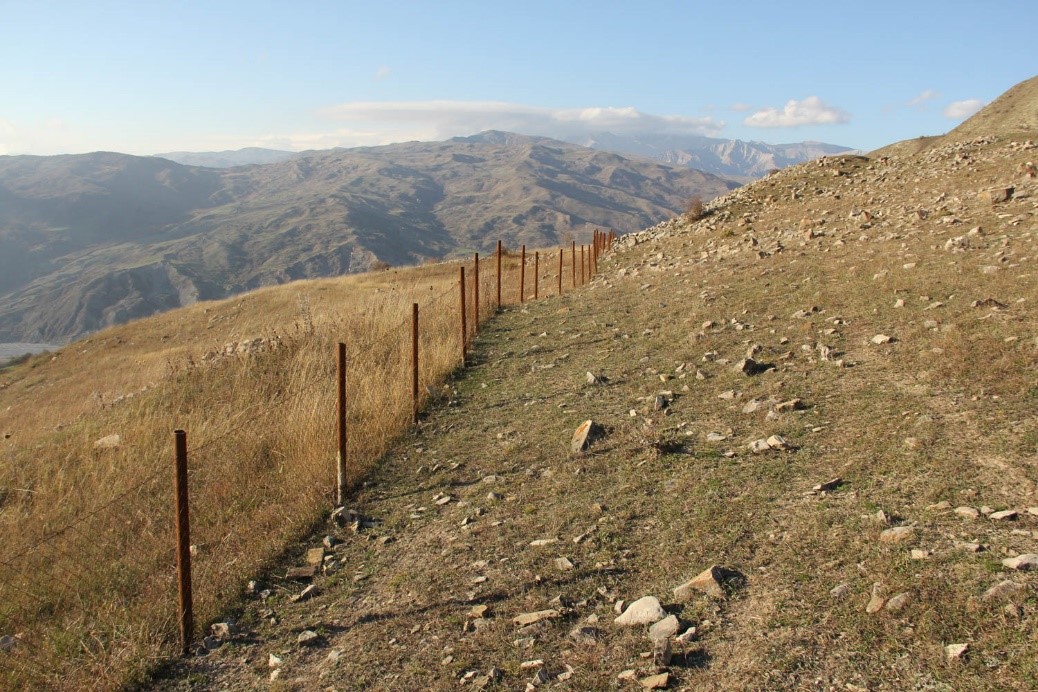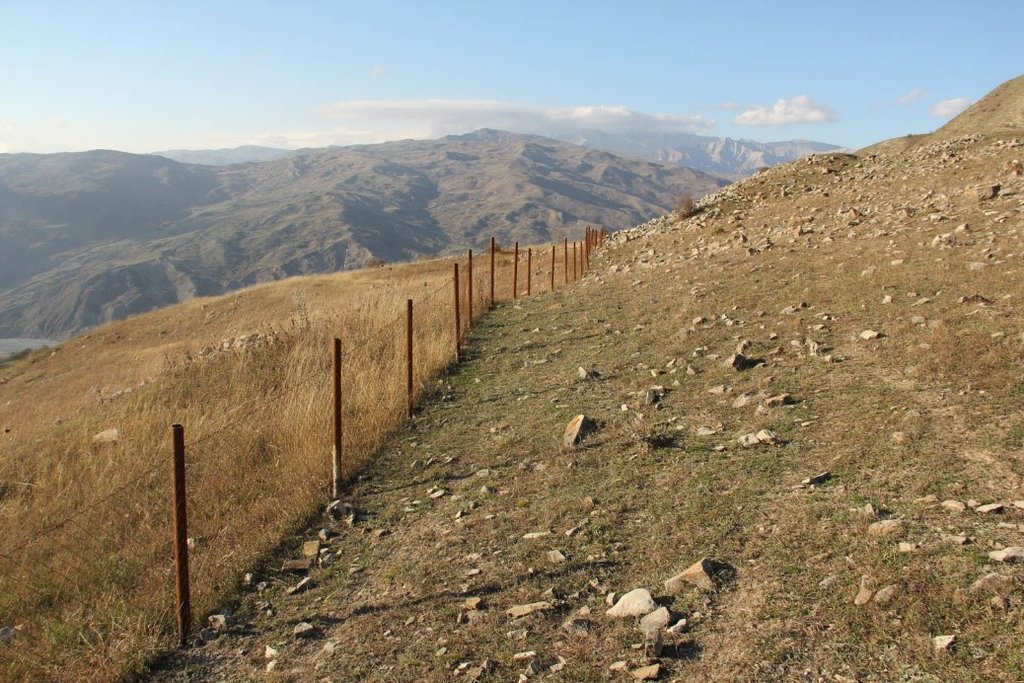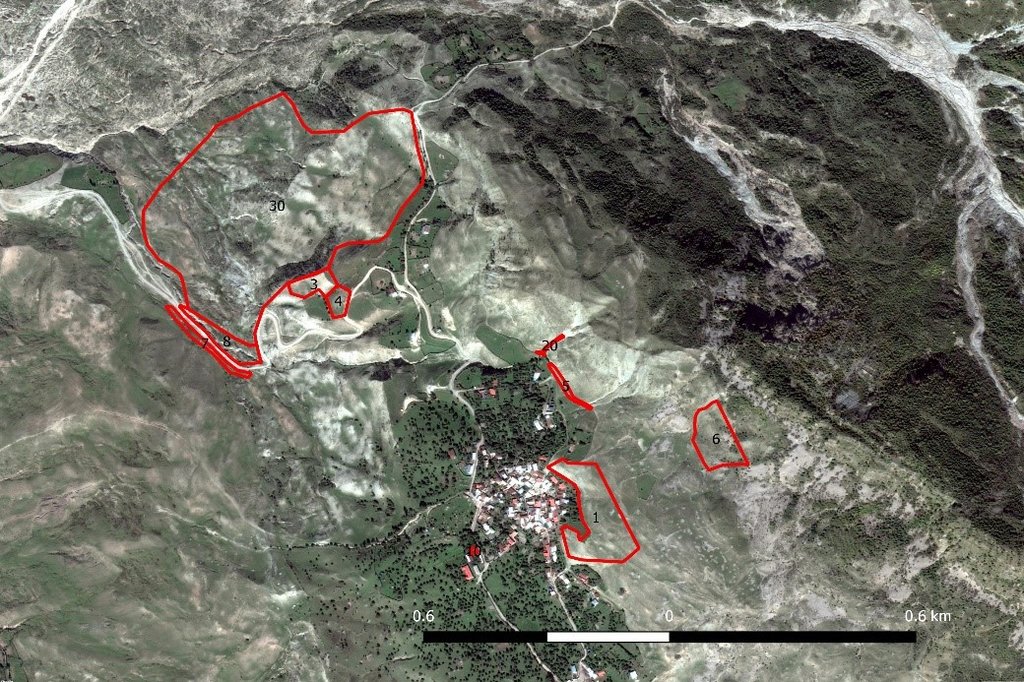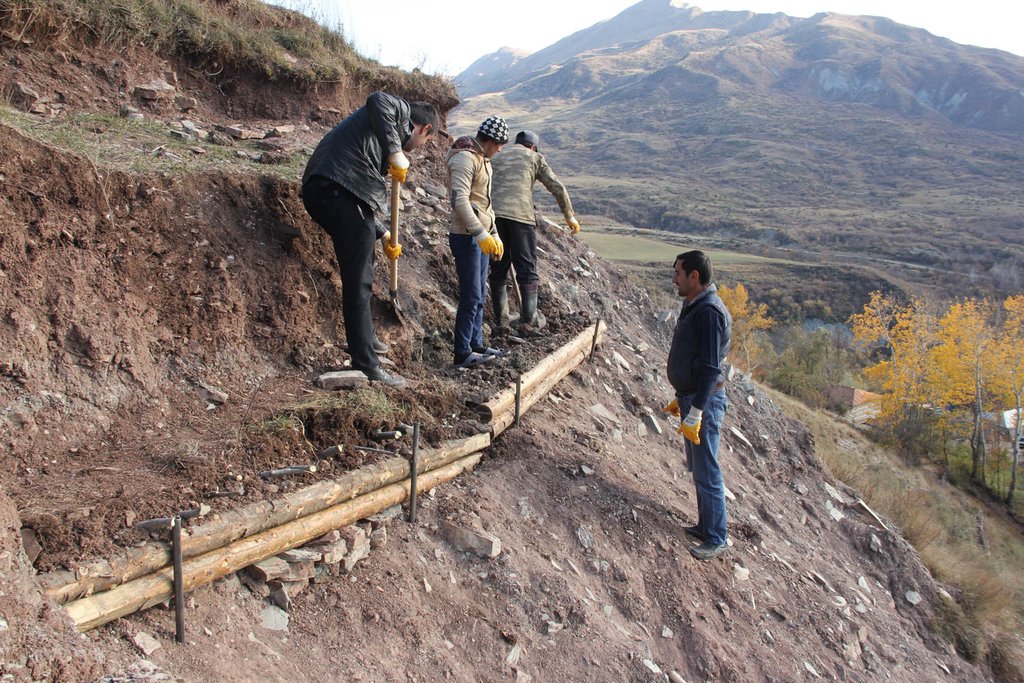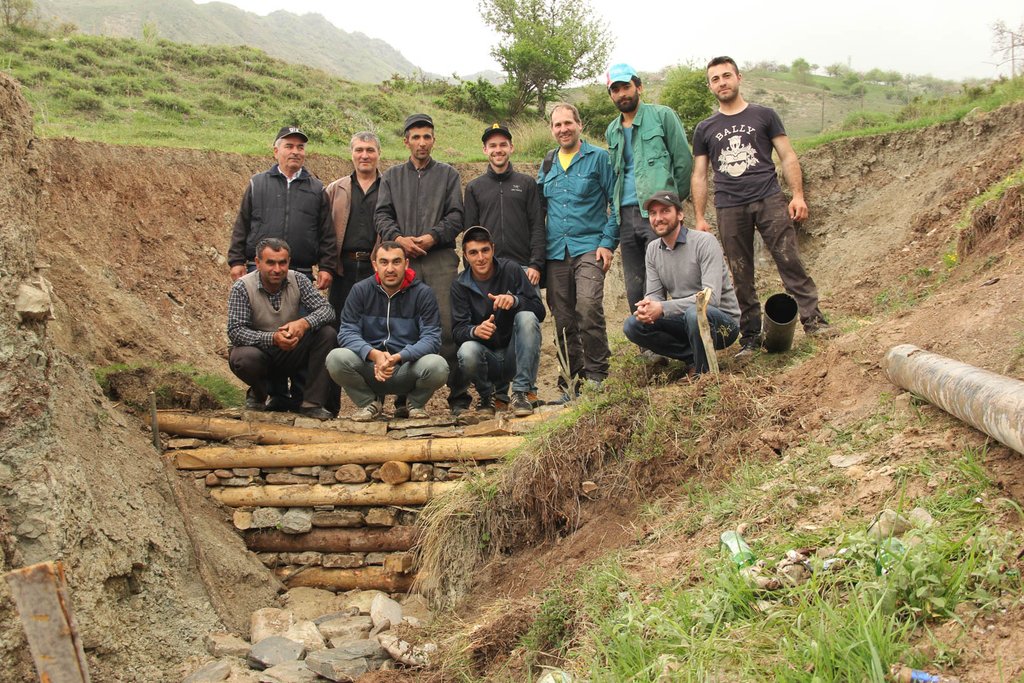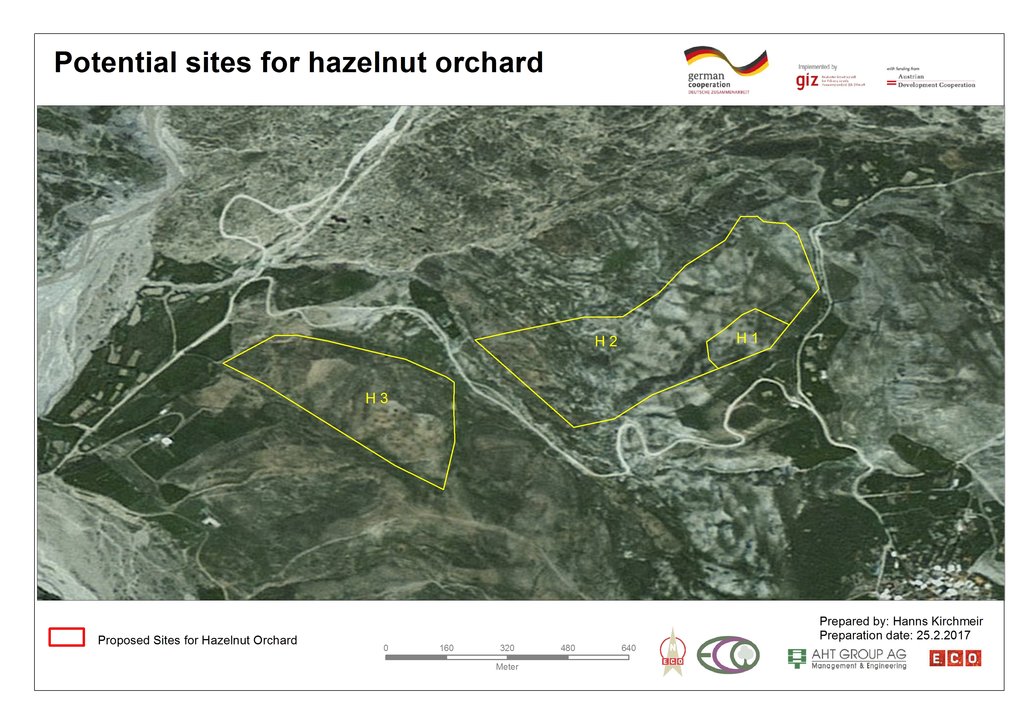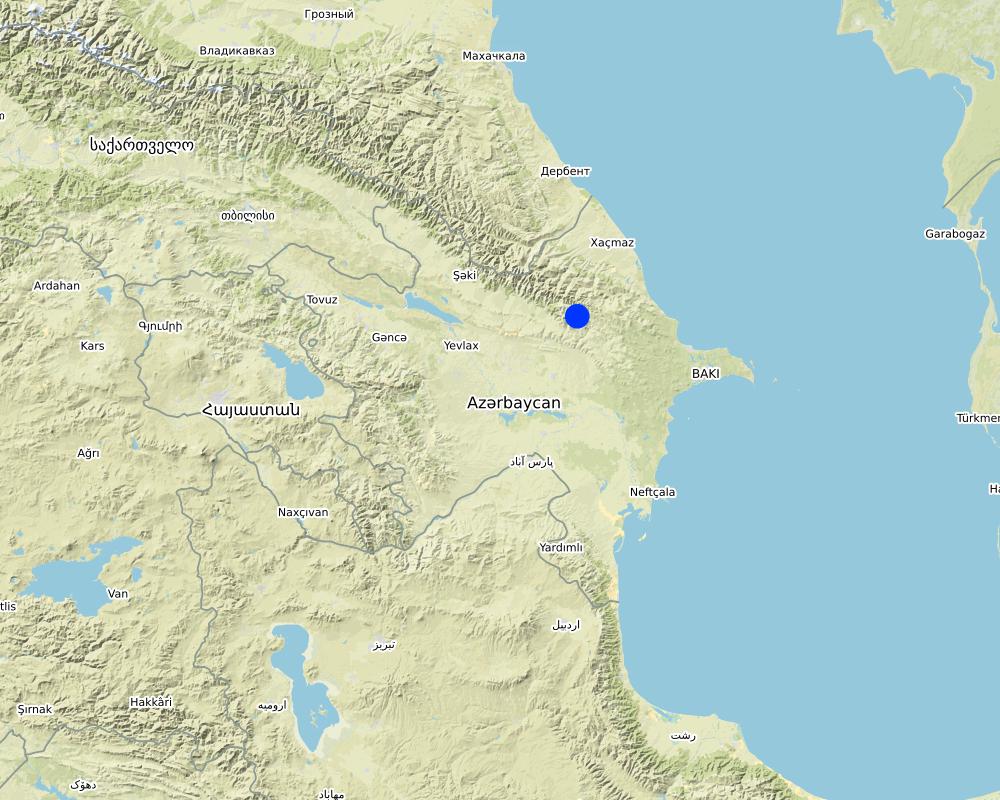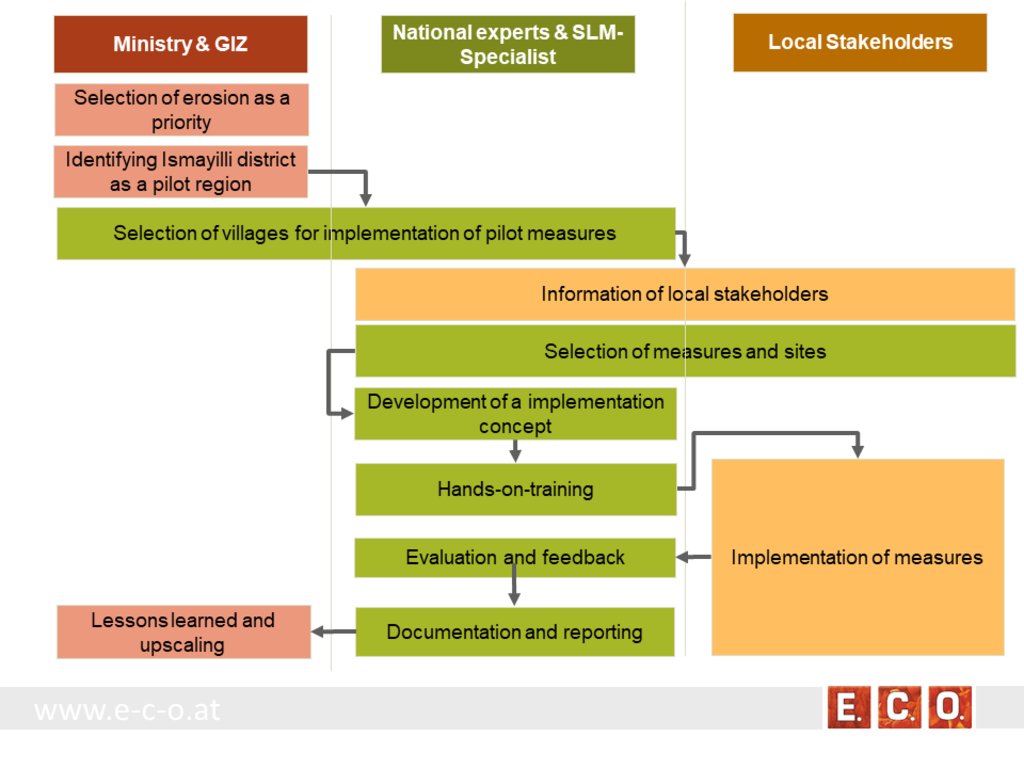Community-based approach in Erosion Control [Азербайджан]
- Создание:
- Обновить:
- Составитель: Hanns Kirchmeir
- Редакторы: Markus Koeppler, Samir Abbasov
- Рецензент: Rima Mekdaschi Studer
Ismayilly district, Ehen community
approaches_5571 - Азербайджан
Просмотреть разделы
Развернуть все Свернуть все1. Общая информация
1.2 Контактные данные специалистов и организаций, участвующих в описании и оценке Подхода
Специалист по УЗП:
Название проекта, содействовавшего документированию/оценке Подхода (если применимо)
Integrated Biodiversity Management, South Caucasus (IBiS)Название организации (-ий), содействовавших документированию/оценке Подхода (если применимо)
Deutsche Gesellschaft für Internationale Zusammenarbeit (GIZ)1.3 Условия, регламентирующие использование собранных ВОКАТ данных
Когда были собраны данные (на местах)?
31/10/2018
Составитель и ответственный/-ые специалист(-ы) согласны с условиями, регламентирующими использование собранных ВОКАТ данных:
Да
1.4 Ссылка (-и) на Анкету (-ы) по Технологиям УЗП
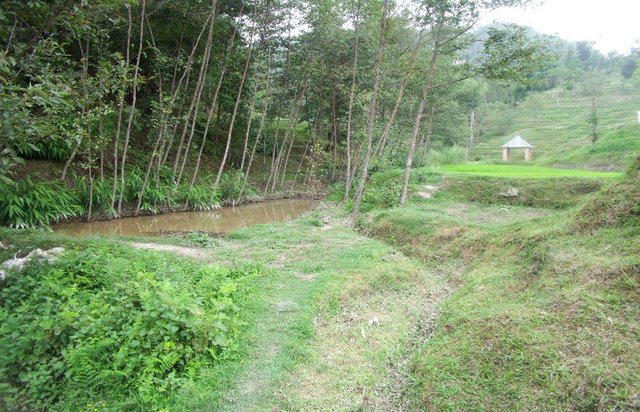
Sustainable land management using controlled gullying [Непал]
An indigenous technology to help control channelled water during the rainy season and conserve it during the dry season
- Составитель: Shreedip Sigdel
2. Описание Подхода УЗП
2.1 Краткое описание Подхода
The unsustainable use of pastures and forest areas leads to erosion, degradation, desertification and loss of biodiversity in high mountain areas of the South Caucasus. In the village Ehen in the Ismayilli district in Azerbaijan, a community-based approach for erosion control was developed in a participative way. Together with village stakeholders, different measures were developed to stop erosive processes, flooding and to rehabilitate vegetation cover.
2.2 Подробное описание Подхода
Подробное описание Подхода:
The Ministry of Ecology and Natural Resources of Azerbaijan togehter witht the Deutsche Gesellschaft fuer Zusammenarbeit (GIZ) selected integrated erosion control as a priority in their cooperation and the district Ismayilli was choosen for the implementation of pilot activities.
The district Ismayilli covers an area of about 2.158 km². Approximately 31% of the territory is covered with forest. Pasture lands on slopes are particularly exposed to vegetation degradation due to overgrazing. The loss of a closed vegetation cover on mountain slopes can lead to severe soil erosion due to surface water runoff. The project team together with the district administration decided to set the focus on the village Ehen near Lahic.
The approach chosen for integrated erosion control in Ehen was a community-based approach. Together with stakeholders, the most severe erosion sites were identified, and a list of priorities was developed. In cooperation with international experts, different technologies and practices were developed to stop erosion processes. Several preconditions for the development of a number of practices were set: The technologies should be cost-effective and affordable for the villagers, and the villagers should be able to use them without the use of external technicians. In order to achieve this, particular emphasis was placed on the application of bio-engineering measures. Measures were applied on degraded pasture lands and erosion gullies in the pilot community at the south slope of the Great Caucasus.
As a first step, the implementation sites were determined through joint field visits by village representatives and experts ('Screening mission'). In the first face the GIZ-team and the SLM-experts have been introduced to the village community. In this phase, the national GIZ project coordinator had the major role to create a basis of respect and trust to enable a positive athomisphere for an open minded discussion. The driving factors of deforestation and overgrazing were discussed in the field, and the potential intervention sites were marked with colour spray and wooden poles in the field. The marking in the field instead of only working with printed maps was very important for the recognition, discussion and acceptance of the sites by all villagers. There was a gap of several weeks between marking and implementation, which provided enough time for internal discussion about the site selection and the adaptation of boundaries.
Nine degraded pastures and forest land sites were selected by the village stakeholders togehter witht the SLM specialists. Four sites are located above the village with the risk of increasing rockfall and flooding by surface water runoff. Five sites are located below the village and were selected to ensure the productivity of the land. For providing tree seedlings, a local tree nursery was established near the school (10th site). One site was selected to combine effects by establishing a hazelnut plantation to stop erosion, increase vegetation cover and provide an income generation opportunity.
Two sites with gully erosion were selected: a site above the village with the risk of flooding into the village and a site below the village along the road with a high risk of road damage if the deepening process continues (detailed instructions on measures can be found at the internet links attached).
Regular meetings took place between the traditional administrative community board, the GIZ-project team and the SLM experts to discuss the implementation process and to evaluate together the results. The availability of local resources was taken into consideration to adapt technologies to fit the local needs. New ideas, localy available materials and technologies have beein integrated into the implementation process by the local stakeholders.
The implementation of the measures was done mainly by the local village people and local experts. The SLM experts provided 'hands-on-training' and all materials that were not available in the village as well external experts were financed by the project.
Another essential aspect is the sustainable use of well-managed meadows by different stakeholders (beekeepers, wild herb collectors, orchard owners and others) in the community. This includes the agreement (rule) of the community to share the protected pastures and to consider the needs of all interest groups. The decission of the profit sharing is taken by the taditional administrative community board. A further factor was the establishment of a tree nursery, which led to an increased motivation to plant additional trees (especially fruit trees) in the community.
2.3 Фотографии, иллюстрирующие Подход
2.4 Видеоматериалы по применению Подхода
2.5 Страна/ регион/ место, где применялся Подход
Страна:
Азербайджан
Административная единица (Район/Область):
Ehen village
Более точная привязка места:
DIistrict Ismayilli
Комментарии:
The pilot sites belong to Ehen village within the district Ismayilli.
Map
×2.6 Даты начала и окончания реализации Подхода
Год начала реализации:
2015
Если год начала реализации Подхода достоверно неизвестен, дайте примерную оценку:
менее 10 лет назад (недавняя)
Год окончания (Если Подход больше не применяется):
2018
Комментарии:
At the 10 locations of the village Ehen the implementation of the approach took place in the years 2016-2018.
2.7 Тип Подхода
- в рамках проекта/ программы
2.8 Каковы цели/ задачи Подхода
Develop erosion control measures that can be implemented by village population without significant investment. The measures are addressed to rehabilitate vegetation on eroded sites and to slow down water speed and erosive energy where gullies already exist. This should help protect roads and other infrastructure as well as stop soil loss and increase overall productivity.
2.9 Условия содействующие применению Технологии/ Технологий в рамках Подхода или затрудняющие его
Социальные/ культурные/ религиозные нормы и ценности
- содействуют
Local population tend to save resources such as forest and pasture surrounding their village. Residents, especially women collect wild plants to use in daily life. Furthermore, selling collected wild plants in the market, residents earn income.
Наличие/ доступность финансовых ресурсов и услуг
- содействуют
Most of the activities (fencing, willow fascines, pilewalls, gabion or wooden check dams) only need small-scale financial investments. Only the drip irrigation system for the hazelnut orchard needed significant external investment, and the return of the investment cannot be expected before 10 years. Such an investment would have been impossible for the village community without external support.
Институциональные условия
- содействуют
The Community Management Group was established at the early stage of the project.
Сотрудничество/ координация действий
- содействуют
Pilot activities are implemented in cooperation with local decision makers and communities. The active involvement of the village people in the implementation works was a hands-on training.
Нормативно-правовая база (землевладение, права на земле- и водопользование)
- затрудняют
The forest’s legal protection does not allow timber or poles to be taken from the forest for the construction of pile walls or wooden check dams. The poles had to be imported and transferred to the village. A balanced sustainable forest management would enable village people to make use of the local timber and would encourage people to establish forest areas.
Программные документы/ руководящие установки
- содействуют
The Azerbaijan policy to establish more than 2000ha of hazelnut orchard in the district of Ismayilli supports the decision to establish hazelnut orchards on eroded sites as a control measure.
Управление земельными ресурсами (принятие решений, осуществление и контроль за выполнением)
- содействуют
Pilot sites are located in municipality land. Community members and local authority decided the border of pilot sites.
Осведомленность в области УЗП, доступность технической поддержки
- содействуют
Residents have some initial knowledge of sustainable land management. Implementing pilot activities their information is developed.
Рынки (для приобретения материалов и услуг, продажи продукции) и цены
- содействуют
Collected wild plants are sold in the market located next to Ehen village.
Объем работ, доступность рабочей силы
- содействуют
The manpower is available in the village
3. Участие и распределение ролей заинтересованных сторон
3.1 Заинтересованные стороны, участвующие в реализации Подхода и их роли
- местные землепользователи/ местные сообщества
Livestock farmers, shepherds, smallholder farms and women that were loosely organised.
Selection of sites for intervention, providing labour during implementation of measure, local hay residuals provided by farmers for testing the measure, maintenance of drip irrigation and electric fence of the hazelnut orchards.
- эксперты по УЗП/ сельскому хозяйству
International and national specialists have been integrated.
The SLM specialist elaborated in close cooperation with the local stakeholders the implementation concept.
- ученые-исследователи
Researcher from the Agrarian University in Ganja.
- местные власти
Ministry of Ecology and Natural Resources, Ismayilli District Administration
Numerous pilot activities (test and demonstrate the most appropriate actions and raise awareness of the community on the long-term socio- economic and environmental benefits of the pilot actions) have been implemented In cooperation with local government in Ehen municipality.
3.2 Участие местных землепользователей/ местных сообществ на разных стадиях реализации Подхода
| Участие местных землепользователей/ местных сообществ | Перечислите участников и опишите их вовлеченность | |
|---|---|---|
| инициирование/ мотивация | нет | The selection of Ismayilli district was done at Ministry level. The selection of the villages was done with district administration and experts assessment of erosion problems. |
| планирование | интерактивное | The site selection was done with local village stakeholders. The technical planning was done by external experts. Four additional municipalities were assessed for hazelnut plantations where local land users provided data. |
| выполнение | интерактивное | Local stakeholders trained on bioengineering measures. The following measures were applied during hands-on training: 1. Wooden check-dam. 2. Gabion check-dam. 3. Willow-fascines. 4. Electric-Fencing. 5.Pile walls. 6.Drip irrigation system. |
| мониторинг/ оценка | интерактивное | An external monitoring team (project team) did the monitoring in a participative way. The observations and monitoring results were discussed with the village stakeholders. |
3.3 Схема реализации (если имеется)
Описание:
This flow chart gives an overview on the different roles of project participants (Ministry and GIZ, the national experts and SLM specialists as well as the local stakeholders) and the actions implementented by them jointly or seperately.
3.4 Принятие решений по выбору Технологии/ Технологий УЗП
Укажите, кто принимал решение по выбору применяемой Технологии/ Технологий:
- преимущественно специалисты по УЗП после консультаций с землепользователями
Поясните:
The integrated erosion control measures were developed by SLM specialists, while site selection and prioritization were done in conjunction with village community representatives.
Поясните на чём было основано принятие решений:
- результаты исследований
- личный опыт и мнения (незадокументированные)
4. Техническая поддержка, повышение компетенций и управление знаниями
4.1 Повышение компетенций/ обучение
Проводилось ли обучение землепользователей/ других заинтересованных лиц?
Да
Укажите, кто проходил обучение:
- землепользователи
- местный персонал/консультанты
Если существенно, укажите гендерный и возрастной состав, статус, этническую принадлежность и т.д.
Only men have been involved in the training of the application of the erosion control measures.
Тип обучения:
- в ходе работы
- опытные участки
Рассматриваемые темы:
Construction of willow fascines, pill walls, wooden check dams, gabion check dams, tree planting, fence construction (electric fence, mesh wire fence), construction and maintenance of drip irrigation system.
Комментарии:
In addition to the on-the-job training, an Austrian study tour was provided for Georgian participants. The focus of the joint study tour was to enable a direct experience of current practices in the Alps giving the participants an impression how the issue of land management and erosion control is handled in mountainous areas of Austria.
4.2 Консультационные услуги
Есть ли у землепользователей возможность получать консультации?
Да
Укажите, где именно оказываются консультационные услуги:
- на полях землепользователей
Описание/ комментарий:
The field trip provided advice and training on afforestation and tree species selection.
4.3 Институциональная (организационная) поддержка
В ходе реализации Подхода были ли организованы новые институциональные структуры или поддержаны уже существующие?
- да, умеренно
Укажите уровень, на котором структуры были укреплены или вновь созданы:
- местные
- региональный
- национальный
Опишите организацию, функции и ответственность, членство и т.д.
The implementation capacity of line ministries, their subordinate bodies and of training institutions regarding the management of biodiversity and ecosystem services is improved. The regional exchange on sustainable management of biodiversity and ecosystem services is improved.
Укажите тип поддержки:
- повышение компетенций/ обучение
Подробнее:
Capacities in project planning, implementation and monitoring have been developed. Awareness raising on erosion-caused land degradation and effective, cost-efficient erosion control measures have been applied.
4.4 Мониторинг и оценка
Являются ли мониторинг и оценка частью Подхода?
Да
Комментарии:
In 2018, monitoring was carried out on the implemented measures in order to assess if additional interventions would be required or if measures had been damaged. Permanent monitoring plots have been established to assess the rehabilitation of vegetation.
Если да, будет ли данный документ использоваться для мониторинга и оценки?
Да
Комментарии:
Monitoring reports have been provided by field experts (Azeri) and international experts (English) and are available from GIZ IBiS office.
4.5 Научные исследования
Были ли научные исследования частью Подхода?
Нет
5. Финансирование и внешняя материальная поддержка
5.1 Годовой бюджет мероприятий по УЗП в рамках Подхода
Укажите годовой бюджет мероприятий УЗП в рамках Подхода в долларах США :
100,00
Если точный годовой бюжет неизвестен, укажите примерный диапазон затрат:
- 10000-100000
Комментарий (например, основные источники финансирования/ ключевые доноры):
In the framework of the GIZ-program “Integrated Biodiversity Management, South Caucasus” (2015-2019), implemented on behalf of the German Federal Ministry of Economic Cooperation and Development (BMZ).
the amount covers: fencing, electric fensing, hay, pile walls, afforestation, wooden check dams, gabion check dams, other materials and labour on the sites of Ehen.
5.2 Финансирование и внешняя материальная поддержка, предоставляемая землепользователям
Предоставлялась ли землепользователям финансовая/ материальная поддержка для применения Технологии /Технологий?
Да
Если да, укажите тип(-ы) поддержки, кто ее предоставил и условия предоставления:
Land users were provided materials for erosion control measures and tree nursery. The timber for the pile walls, the mesh wire fence and the electric fencing material as well as well as tanks for rain water collection (for the tree nursery) and irrigation equipment was provided. The local stakeholders provided man power for the mainance of fences and irrigation system and maintaining the tree nursery for free. Workpower for setting up infrastructures like gabions or chech damms was paid.
5.3 Субсидии на отдельные затраты (включая оплату труда)
- труд
| В какой степени | Опишите субсидии подробнее |
|---|---|
| профинансированы полностью | Only the construction of technical infrastructure (fence, check dams, irrigation system was paid. Maintenance work was not paid. |
- сельскохозяйственные
| Укажите, какие ресурсы были субсидированы | В какой степени | Опишите субсидии подробнее |
|---|---|---|
| tree nursery | профинансированы полностью | Equipment (fence, water tanks, irrigation system, tools) have been financed. Seeds have been provided by locals. |
- строительные материалы
| Укажите, какие ресурсы были субсидированы | В какой степени | Опишите субсидии подробнее |
|---|---|---|
| древесина | профинансированы частично | Timber for pile walls was bought and provided, branches for willow fence and fascines was contributed by locals. |
Если труд землепользователя был существенным вкладом, укажите, был ли этот вклад:
- в обмен на другие материальные ресурсы
Комментарии:
Fruit trees and walnut trees have been contributed by the project for the afforestation on site 1 near the village.
5.4 Кредитование
Предоставлялись ли в рамках Подхода кредиты на мероприятия УЗП?
Нет
5.5 Другие методы или инструменты стимулирования
Использовались ли другие методы или инструменты стимулирования для продвижения Технологий УЗП?
Да
Если да, поясните:
For the implementation of the pilot measures in Ehen, material and payment for labour was provided. There have been some follow up activities in neighboring villages where only the material was provided, as the work was done voluntarily.
6. Анализ влияния и заключительные положения
6.1 Влияние Подхода
Сумел ли Подход расширить возможности местных землепользователей, повысить участие заинтересованных сторон?
- Нет
- Да, немного
- Да, умеренно
- Да, существенно
The application of easy-to-use measures for erosion control enabled local land users to arrange land management and erosion control measures by themselves without relying on significant external support. The pilot actions in the village Ehen are used as a showcase for the neighbouring villages.
Сумел ли Подход помочь землепользователям внедрить и поддерживать технологии УЗП?
- Нет
- Да, немного
- Да, умеренно
- Да, существенно
As a result of the on-the-job training, most of the activities (fencing, pile walls, hay mulch application, wooden and gabion check dams) can now be implemented by the local village stakeholders without external support.
Сумел ли Подход мобилизовать/ расширить доступ к финансовым ресурсам для применения практик УЗП?
- Нет
- Да, немного
- Да, умеренно
- Да, существенно
International funds were accessible for the village community and other international donors funded measures in the same village.
Сумел ли Подход расширить знания и возможности землепользователей в применении практик УЗП?
- Нет
- Да, немного
- Да, умеренно
- Да, существенно
The involvement of local stakeholders in all stages of planning, site selection and implementation improved capacity and knowledge. It was very important that the work was done mainly by local village people and not by external companies.
Сумел ли Подход расширить знания и возможности других заинтересованных сторон?
- Нет
- Да, немного
- Да, умеренно
- Да, существенно
University experts and district-level technicians participated in the planning and implementation. They can act as knowledge hubs.
Сумел ли Подход снизить остроту конфликтов?
- Нет
- Да, немного
- Да, умеренно
- Да, существенно
Сумел ли Подход способствовать улучшению продовольственой безопасности/ качества питания?
- Нет
- Да, немного
- Да, умеренно
- Да, существенно
Сумел ли Подход расширить доступ к рынкам?
- Нет
- Да, немного
- Да, умеренно
- Да, существенно
Сумел ли Подход привести к созданию новых рабочих мест/ к расширению возможностей получения дохода?
- Нет
- Да, немного
- Да, умеренно
- Да, существенно
Villagers have reported that the improved vegetation in the fenced areas led to significantly higher honey harvest and herb collection for marketing on the bazaar of Lahic village.
Protection from national hazards:
- Нет
- Да, немного
- Да, умеренно
- Да, существенно
All gabions at the sites in Ehen are functioning well and show the impact of the gully deepening and the wash out at the lower (downhill) end of the gabion. Reduced water speed and the stabilised river bed helped to save the road.
Economic impact and improvement of livelihoods via ECM (Erosion control measures):
- Нет
- Да, немного
- Да, умеренно
- Да, существенно
In the pilot sites, main economic activities are haymaking, the collection of wild plants, beekeeping and harvesting of nuts (hazelnuts and walnuts). Since there is no more overgrazing in the pilot areas, the plant’s biodiversity is expected to continue increasing, so the bees tend to pollinate more often in these areas. Conducted analyses during the project show that local population would benefit from 97.770 AZN per hectare (97.770 AZN = 57.334,7 USD (as per 01.10.2018)) in the period of 15 years because of the net income coming from beekeeping, haymaking, the collection of wild plants and harvesting of hazelnuts.
Sustainable Land Use:
- Нет
- Да, немного
- Да, умеренно
- Да, существенно
The approach helps to mitigate land degradation by surface erosion. Hay making, forestry and hazelnut production have been supported as alternative land use on the rehabilitated land. Up until now, only pilot measures have been implemented on limited areas of the village area.
6.2 Основные причины, побуждающие землепользователей внедрять УЗП
- рост продуктивности
Improved vegetation, soil fertility and productivity of the land.
- рост прибыли (доходности) и рентабельности
The planting of hazelnut trees addressed reduction of erosion and as a second priority the production of hazelnuts for economic purposes.
- снижение деградации земель
Pasture lands on slopes which were exposed to the degradation of vegetation caused by overgrazing. Now grazing is blocked by fencing, and the land use was changed to either hay production, forest or hazelnut production.
- снижение риска катастрофических погодных явлений
Gully erosion parallel to the road and further erosion of the gully’s left side which led to destruction of the road. The villagers are reporting that no rock falls and flooding were observed in the years 2017 and 2018 after the application of measures on site 1 above the village.
- экологическая сознательность
- приобретение знаний и опыта в области УЗП
6.3 Долгосрочная устойчивость мероприятий в рамках Подхода
Могут ли землепользователи самостоятельно (без внешней поддержки) продолжать применение того, что было реализовано в рамках Подхода?
- да
Если да, опишите как:
Local stakeholders trained on building and applying measures. The measures (fencing, pile walls, wooden and gabion check dams) are low-cost and can easily be replicated by village stakeholders. Only the drip irrigation system and electric fencing for the hazelnut orchard needs high investment and might not be up-scaled without external support.
6.4 Сильные стороны/ преимущества Подхода
| Сильные стороны/ преимущества/ возможности по мнению землепользователей |
|---|
| The integration of local stakeholders in the selection of measures and sites helped to address the most 'urgent' problems from the villagers view. |
| It was important to have visual results from the work in a short time. Especially the reduction of flooding was a very positive result as well as the increased number of flowering plants which led to an increase of honey and tea production, which created additional income. Some of the trained techniques have been already transferred by villagers to neighbouring communities. |
|
Most of the beneficiaries see the hazelnut plantation area as a potential source of income in the future and at the same time as a useful measurement for rehabilitation of the biodiversity and measure against erosion. Land users see the implementation of the measures on the site as contribution to the future tourism perspective of the village. |
| The pilot measure is cost-efficient and affordable for local people. It has a positive ratio of cost/benefit. |
| Сильные стороны/ преимущества/ возможности по мнению составителя или других ключевых специалистов |
|---|
| Measures are easily implemented and materials (mesh wire, willows, seedlings) are available locally. |
| The measures are showing significant impacts in a short time. The rehabilitation of vegetation and the gathering of sediments halting gully deepening is already visible in the first year after implementation. |
| As there is still enough pasture land available and the areas of intervention have been implemented on degraded land, there was no major conflict with shepherds and farmers. |
6.5 Слабые стороны/ недостатки Подхода и пути их преодоления
| Слабые стороны/ недостатки/ риски по мнению землепользователей | Возможные пути их преодоления/снижения? |
|---|---|
| Low capacity of the municipality was limiting to the management of the drip irrigation and the electric fence. | Handing over the hazelnut orchard to a private cooperative could increase ownership and personal involvement of local stakeholders in orchard maintenance. A long-term business plan and financing model needs to be developed if the approach is to be up-scaled. |
|
Current electric fence of hazelnut plantation is not efficient in protecting area from free roaming animals. It also reflects on the inefficiency of the overseer`s working time, as he spends entire working hours on the controlling the fence which reduces his time on spending on the additional activities like controlling plant growth and irrigation system. |
Changing electrical fence to the ordinary mesh fence or wire fence. |
| Слабые стороны/ недостатки/ риски по мнению составителя или ответственных специалистов | Возможные пути их преодоления/снижения? |
|---|---|
| Because of a general ban on forest management, the timber used for pile walls and wooden check dams cannot be extracted from the local forest. | Timber and logs have to be bought from foreign markets. An adaptation of laws on the legal extraction of local timber for certain purpose would be helpful. |
| Hazel needs more than 750 mm annual precipitation. Humidity above 60% in June and July is beneficial. A strong wind is a danger for young trees. Ehen has 500-700m precipitation and significant summer drought. | A drip irrigation system was applied to overcome summer drought in the first couple of years until seedlings have established a sufficient root system to access water from deeper soil layers. |
| The electric fencing and the drip irrigation for the hazelnut plantation and fruit tree plantations above the village need expensive investment and specific skills for mounting and maintenance. | Project investment was used for pilot measures as a demonstration site. The hazelnut orchard can show a positive return on investment within 10-15 years if managed well. |
7. Справочные материалы и ссылки
7.1 Методы сбора/источники информации
- выезды на места, полевые обследования
Five field visits by international experts. Frequent field visits by national field expert provided by GIZ.
- опросы землепользователей
Intensive meetings and discussions on the current land use and opportunities of alternative land use forms have been applied.
- данные, собранные из отчетов и достоверных документов
Six mission reports are available. Results have been compiled in a handbook on integrated erosion control and information leaflets ("BioTopics").
7.2 Ссылки на опубликованные материалы
Название, автор, год публикации, ISBN:
Planning meetings, site visit and stakeholder meeting, Hanns Kirchmeir, Azerbaijan 2017.
Где опубликовано? Стоимость?
Report based on field vists
Название, автор, год публикации, ISBN:
Hazelnut plantations on eroded sites in Ismayilli, Hanns Kirchmeir, 2017
Где опубликовано? Стоимость?
Concept based on surveys and field visits
7.3 Ссылки на материалы, доступные онлайн
Название/ описание:
Synthesis Report on Erosion control measures 2014-2017
Адрес в сети Интернет:
https://biodivers-southcaucasus.org/uploads/files/5b8655b3db452.pdf
Название/ описание:
Handbook on Integrated Erosion Control
Адрес в сети Интернет:
http://116.203.245.69/uploads/files/IEC%20Handbook_EN.pdf
Ссылки и модули
Развернуть все Свернуть всеСсылки

Sustainable land management using controlled gullying [Непал]
An indigenous technology to help control channelled water during the rainy season and conserve it during the dry season
- Составитель: Shreedip Sigdel
Модули
Нет модулей


